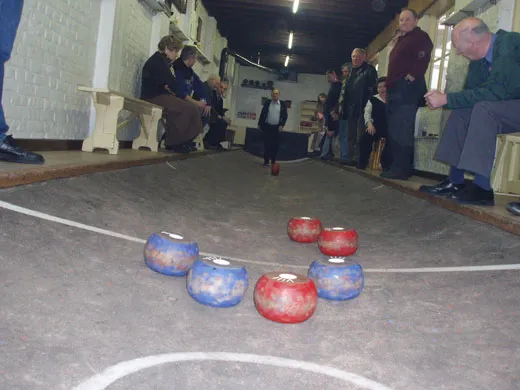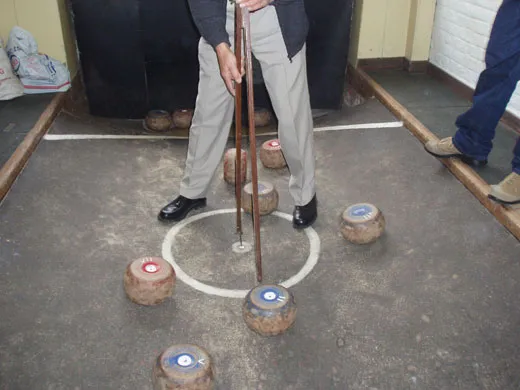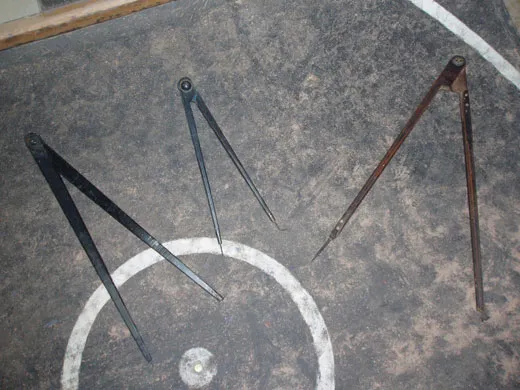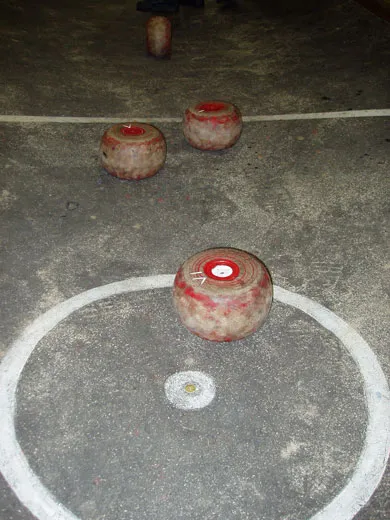Weave, Wobble and Roll: Feather Bowling
The unusual Belgian sport has a small but loyal following in Detroit
/https://tf-cmsv2-smithsonianmag-media.s3.amazonaws.com/filer/feather-bowling-detroit-631.jpg)
With a thump and a rumble, what looks like a wooden wheel of Gouda zigzags down a concave clay lane, careening toward a pigeon feather standing at attention in the dirt 60-feet away. Amused onlookers howl as it maneuvers around other balls, staggering and dropping within inches of the gray plume. Cheers erupt and bottles of Belgian ale clink. It’s Saturday night at the Cadieux Café in Detroit and the partygoers play this quirky game of feather bowling to celebrate a 50th birthday with some old-fashioned Flemish fun.
More akin to bocce ball than tenpin bowling, this arcane sport, which originated in western Belgium, was imported to Detroit in the 1930s by Belgian immigrants, who attached a two-lane alley on this former speakeasy to enjoy their native country’s novel diversion. “The Cadieux Feather Bowling Club is going on 75 now,” says Ron Devos, co-owner of the place with his nephew Paul Misuraca, both members of the league. Keeping the establishment in the family, Devos, like his father who emigrated from the Flanders region, is proud to preserve this historic pastime and offer a taste of Belgian fare. Adjacent to the lanes, the Euro-styled bistro serves mussels, fries (which are Belgian—not French), and a menu of ales including herbal-tinged Trappist monk varieties.
Curious customers clamored to try out the courts after peeking in on league games, so the Devoses opened feather bowling to the public in the 1980s. The only authentic feather bowling spot in the U.S., the Cadieux Café turned this esoteric folk tradition into a destination for Detroiters and it grew into a phenomenon. Lanes are booked weeks in advance on weekends nights at $40 an hour and $25 on weekdays, filled up with family festivities, hipster bashes and retirement parties. Fluorescent fixtures hang from the café’s pressed-tin ceilings and the walls are adorned with memorabilia, scoreboards, a vintage measuring device, and House Rules, such as: “No high-heeled shoes.”
Feather bowling is “unusual and different,” says Paula Konfara, a teacher playing for her brother-in-law’s team. Gripping a scuffed 9-inch 5-pound ball in her right hand, Konfara bends one knee and sends the disk hurtling down the lane. It rambles toward the feather, sways and shudders to a stop next to a red ball. When it’s a close call, teams haul over compass-like yard-long “sticks” to measure the distances and determine the point. “Since the object is to get closest to the feather,” Devos explains, “the first team up tries to surround the feather and the other team attempts to break up ‘blockers’ and weave around opponents’ balls to land closer.”
A large hand-drawn map of Belgium notes league players’ hometowns, from Brugge to Wakken. Even though there are hundreds of small clubs in Belgium, according to Pascal Lapanne, a member of the Royal Feather Bowling Society in Poperinge, Belgium, the game is overshadowed by soccer, TV and video games. “Almost nobody really knows this feather bowling game,” he adds, “but it would be a pity if it disappeared.” The 40 members of his nearly 100-year-old club gather weekly for a dignified game in back of a local café. Unlike the raucous scene at Cadieux, “you can’t make too much noise,” warns Lapanne, “no shouting, the moment someone is throwing.”
Feather bowling has been around at least since the Middle Ages. Belgian author, Gerard Vervaeke, Het West Vlaams Trabolspel: Mijn Passie (West Flemish Feather Bowling Game: My Passion) mentions a 15th-century painting that depicts the game. Similar to boules or petanque in France and kubb in Sweden, and not unlike horseshoes, it is another variant of bowling, which dates back to ancient Egypt. Lapanne suspects the custom of using feathers as stakes began because “they were freely available and didn’t obstruct the ball.” His club has replaced the feather with a target painted on the lane.
Like the game itself, feather bowling rules are pretty simple. Winning seems almost accidental. The ball closest to the feather gets a point—even atop the feather—and ten points takes the game, which is played with two teams of two to twelve players. Cadieux players agree that what delights them is watching the balls wobble and spin around drunkenly, banking on the curved walls. “We just do it for laughs,” says Jules Borsch, a photographer waiting for a lane with friends at the bar. “That ball acts so goofy, it’s a riot.”





